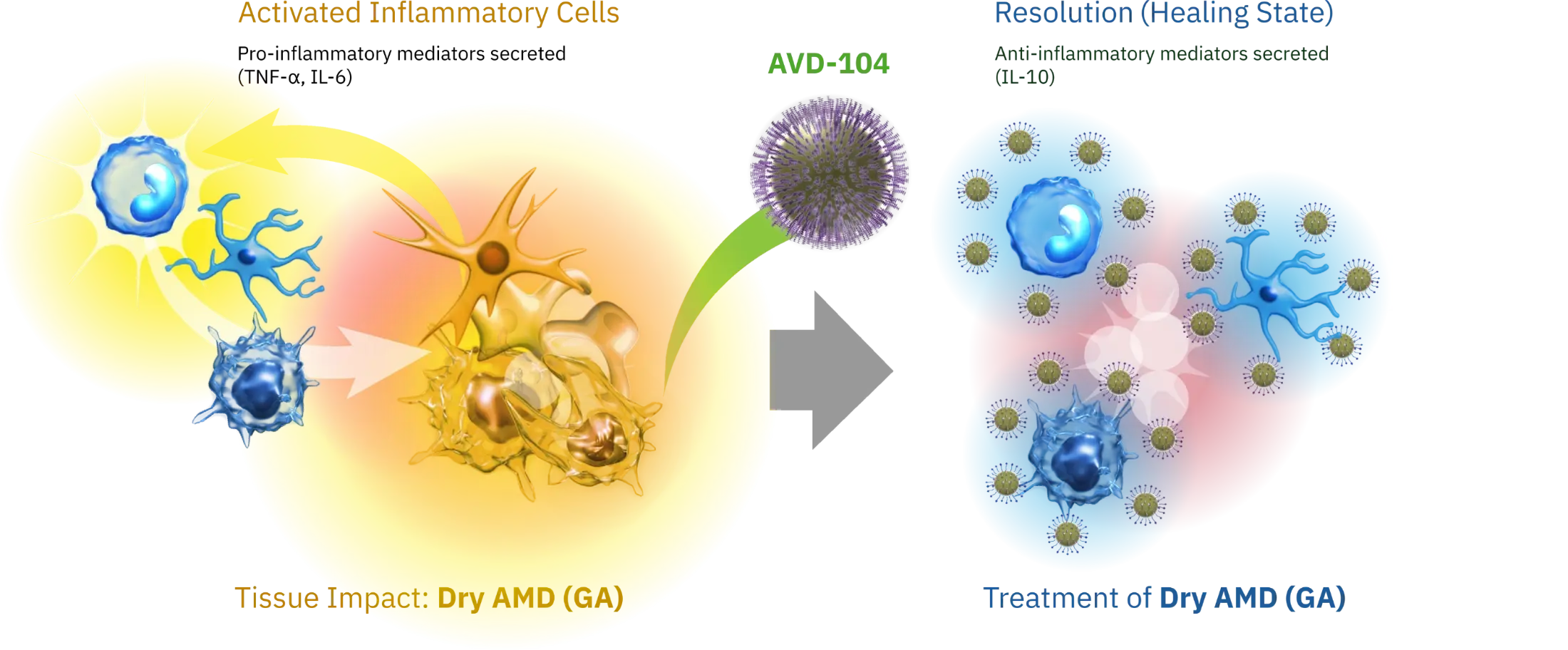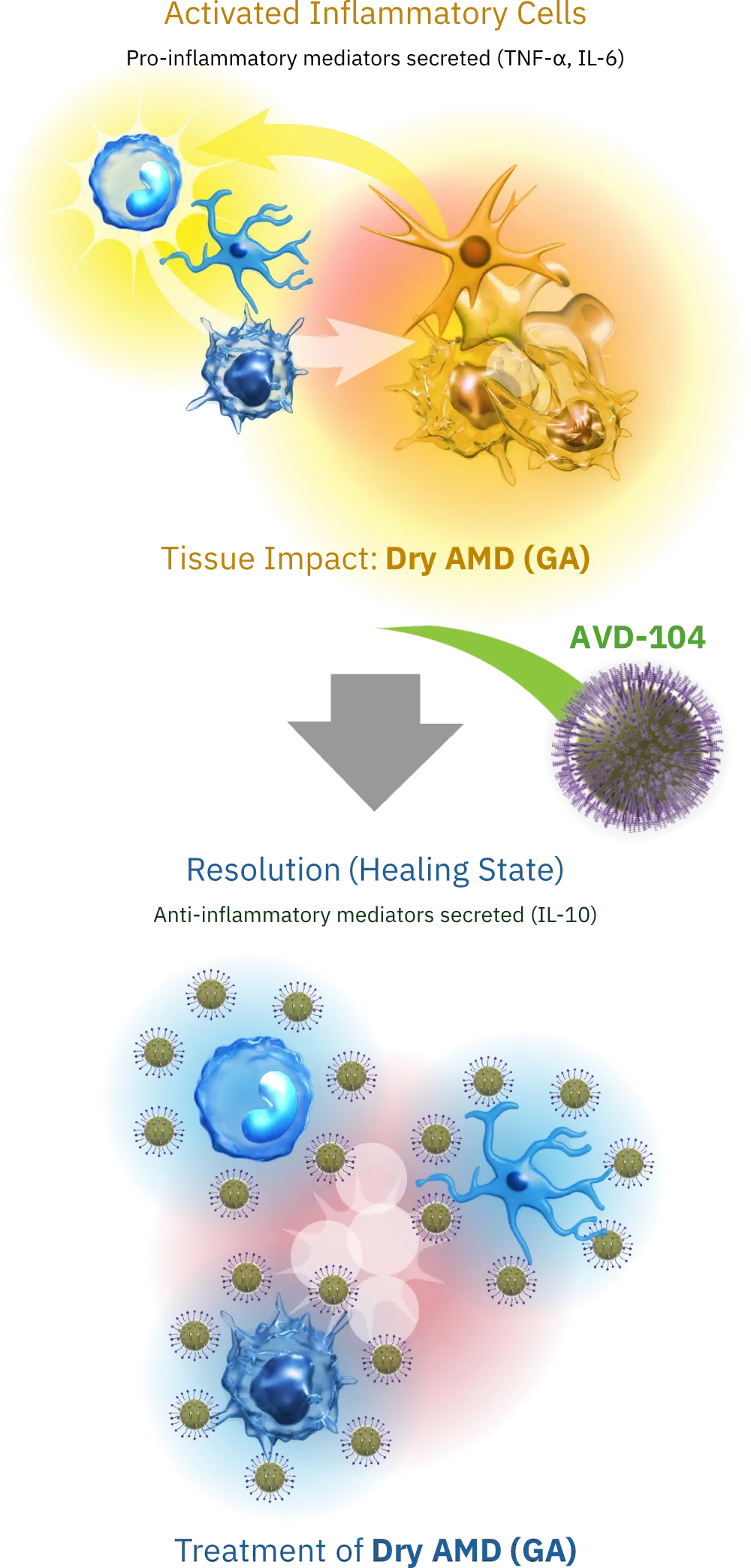Lead Asset
Our lead asset, AVD-104, is a sialic acid coated nanoparticle. It is a first-in-class glyco-immune checkpoint modulator for slowing the progress of dry age-related macular degeneration (AMD) - a leading cause of blindness and a public health burden.
About AMD
AMD is a progressive, vision compromising immune mediated disease that is a leading cause of blindness and a public health burden.
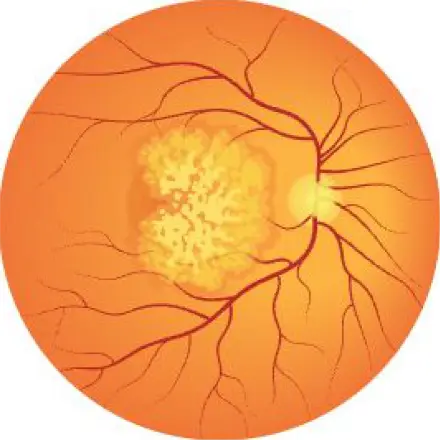
Geographic atrophy
- Chronic inflammation characterizes AMD, caused by the disruption of homeostasis and potentiated by several risk factors
- Environmental Factors, Aging, Genetic Mutations
- A hallmark of dry AMD is geographic atrophy (GA), a progressive and irreversible form which leads to vision loss due to damage and death of photoreceptors
- Over 1 million people in the US, and 5 million worldwide, suffer from GA secondary to dry AMD
- Incidence and prevalence of GA are increasing due to the aging population and earlier and more frequent diagnosis
- Approximately 20% of GA patients also develop neovascular AMD within 3 years
- AMD is a progressive disease with significant patient and societal impact
- Patients can progress from good vision to an inability to drive within several years
- GA is a major cause of legal blindness in the US
- GA is responsible for billions of dollars in lost yearly wages in the US
Pathophysiology of AMD
Chronic, low-grade inflammation is a major driver of disease onset and progression in age-related macular degeneration. Environmental and genetic factors lead to the accumulation of toxic molecules that lead to inflammation. As inflammation continues, there is invasion by macrophages, microglial cells, and peripheral blood monocytes into the retinal and subretinal spaces, leading to the degeneration of photoreceptors and RPE cells.
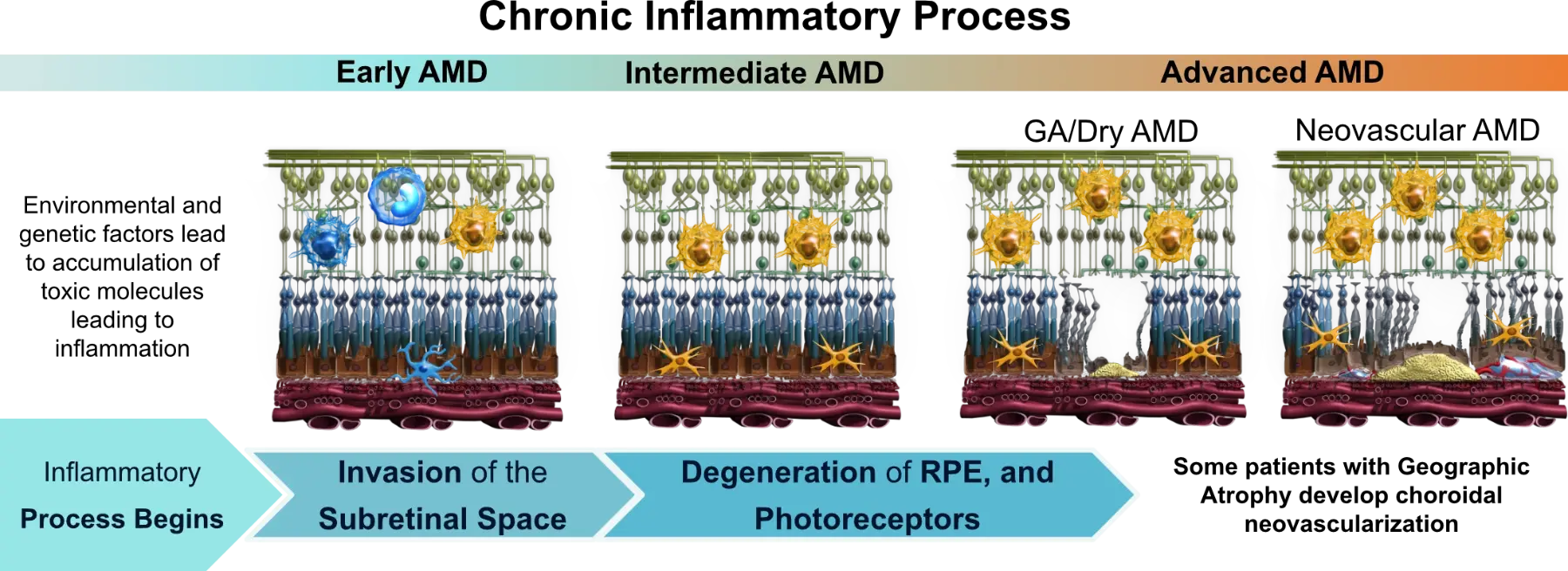
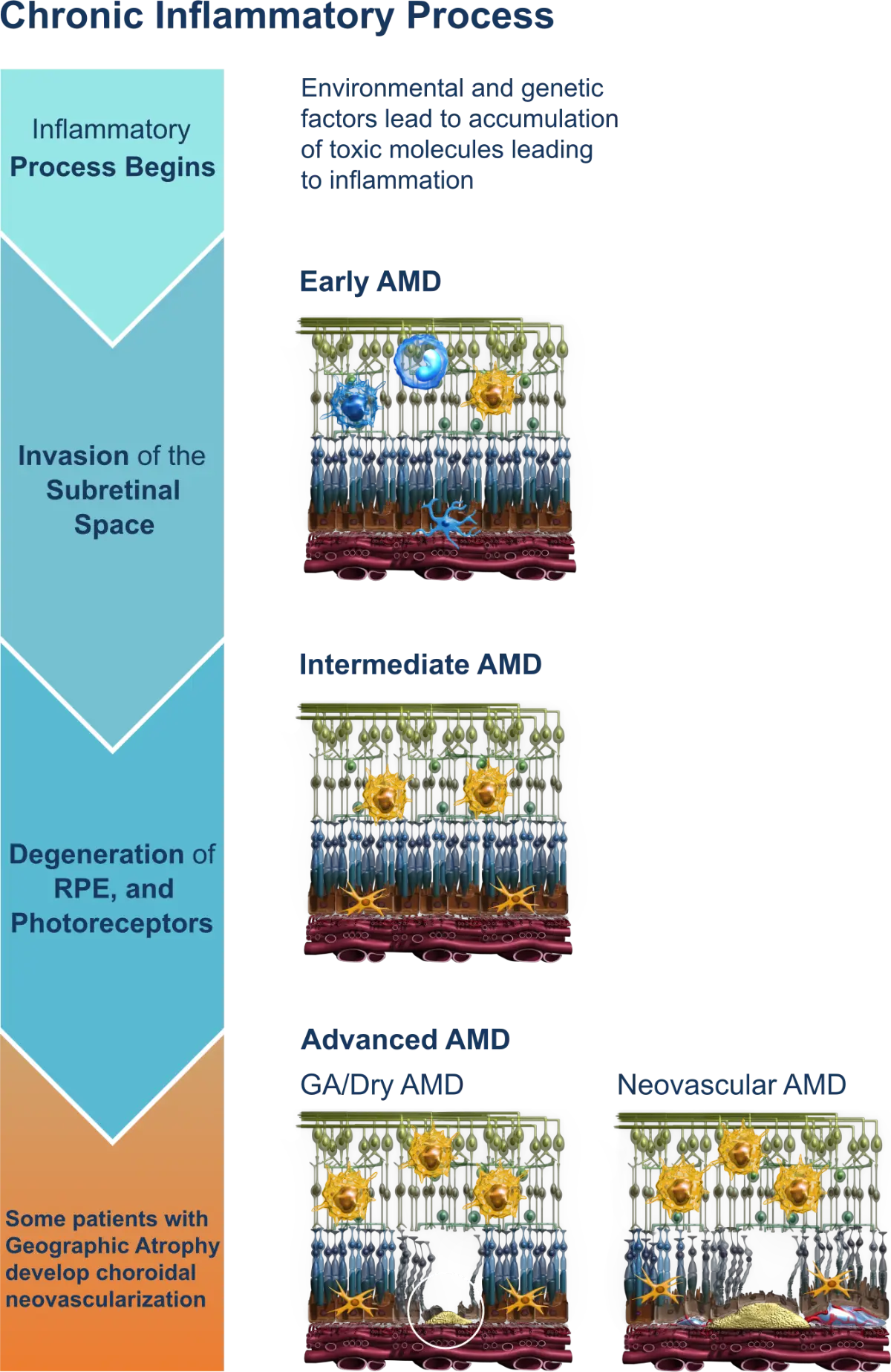
AVD-104
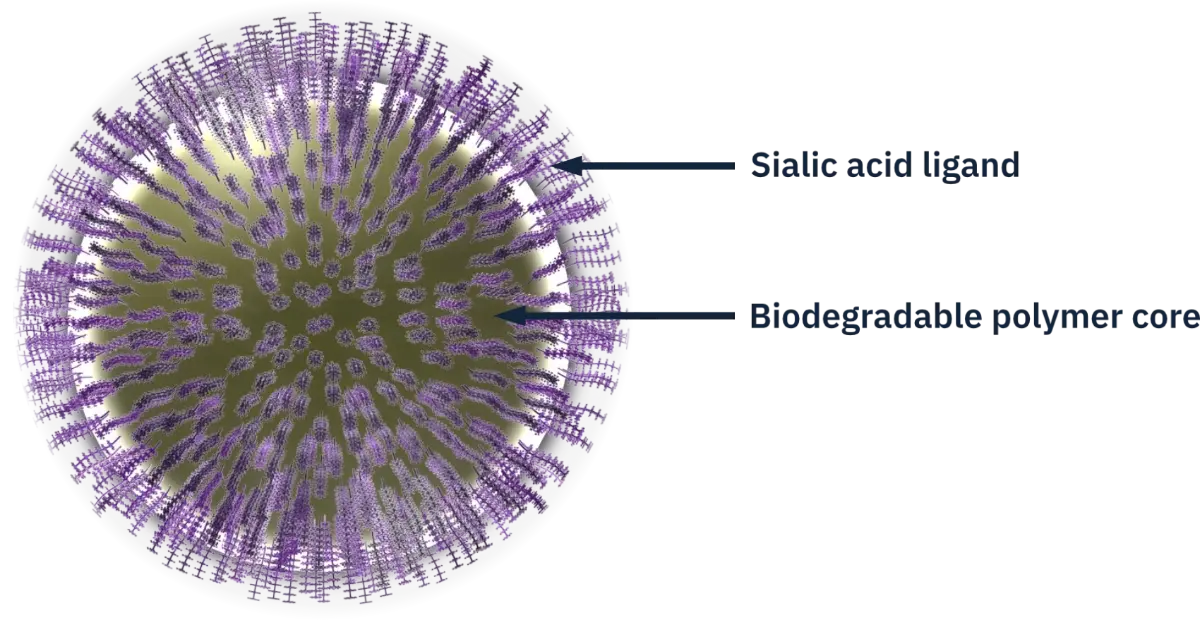
AVD-104 acts as a Siglec checkpoint modulator to mitigate inflammation. It achieves this by suppressing the activation of key immune cells—namely macrophages, microglia, and monocytes—which are responsible for driving inflammatory responses in cell types relevant to age-related macular degeneration (AMD).
